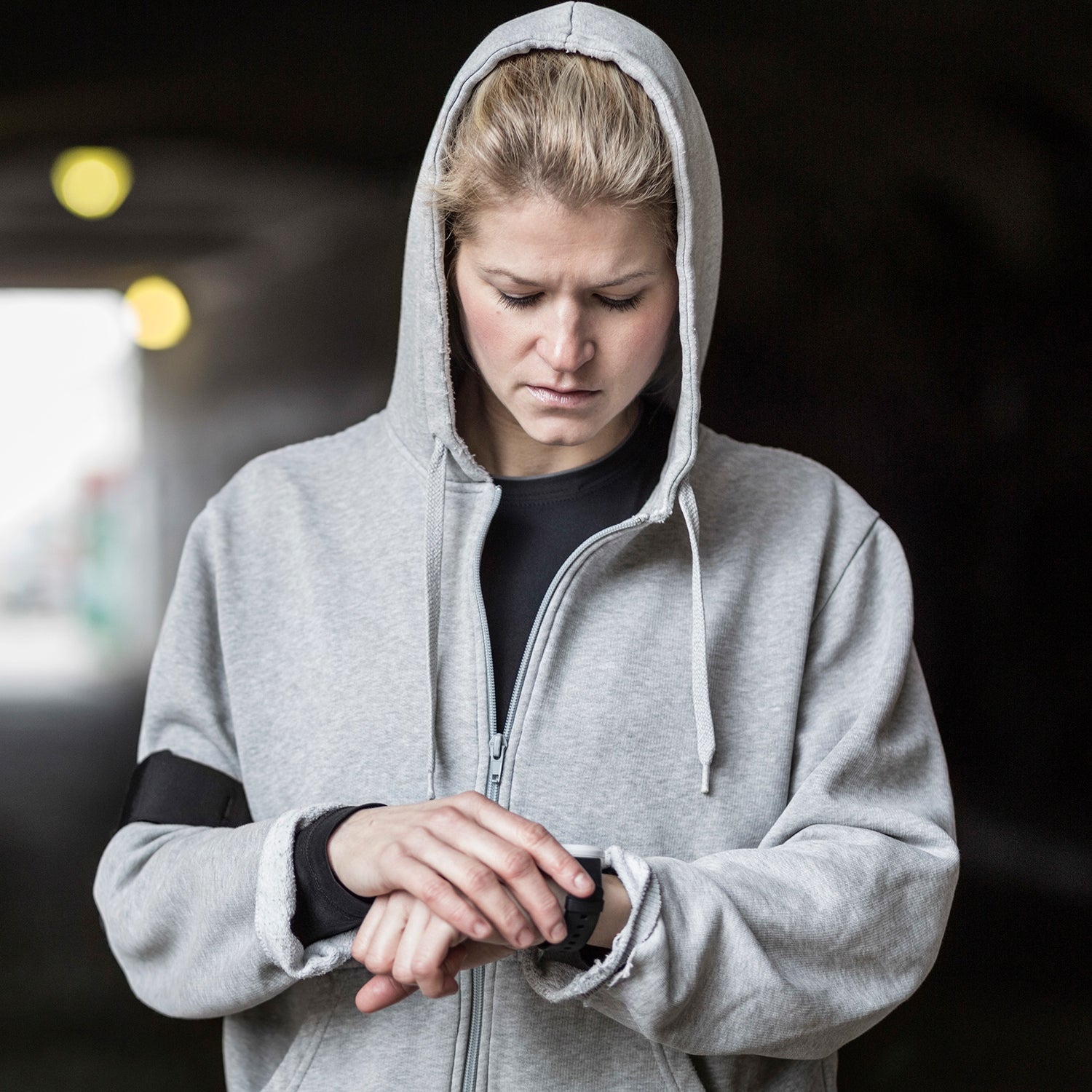Colorado-based triathlon coach Alan Couzens has a love-hate relationship with the rise of heart-rate variability tracking, or the ability to measure the variation between one’s heart beats. HRV unlocks high-level information about how well an athlete is recovering, as well as how ready they might be for their next big workout. But the problem is, while the tech to measure HRV has gotten simple and inexpensive—an app linked to your phone’s camera or a heart rate chest strap is all you need—analyzing the data is still complicated and requires patience and understanding.
More than 50 years ago, scientists discovered that the more variation in the time between someone’s heartbeats, the healthier the heart is. More variability indicates your heart is reacting well to the second-by-second changes in your body, such as the peaks and valleys in oxygen when you inhale and exhale. “Another way to look at it is that HRV is a good indicator of whether your central nervous system is in a fight or flight mode [low variation] or a rest and repair mode [high variation],” says Couzens.
HRV unlocks high-level information about how well an athlete is recovering, as well as how ready they might be for their next big workout.
Over the last 20 years, elite trainers have begun to use this data to measure how well their athletes recover from big workouts. We all have fluctuations in our HRV, but consistent readings of high variation are a strong indication of good recovery and the heart’s readiness to take on another training block. Yet until recently, tracking HRV required complex, expensive equipment and was often only used by pro or Olympic-level endurance athletes. Now, there are dozens of HRV-specific apps on the market (the function has been added to many fitness and sleep wearables) and they have become a popular tool for endurance athletes who are hoping to quantify recovery.
����
Of course, the problem with selling a complex medical system that for decades was only used by trained professionals in a lab setting is that things get oversimplified quickly. “The strength of the technology is its sensitivity. But if you don’t have a deep understanding of it, it’s hard to get a sense of where you stand relative to the norm,” says Couzens. “I see a lot of athletes using the info before they’ve established a baseline. Knowing your own patterns and baseline is how you will know which is correct.”
Most HRV apps, like or , take your pulse via your phone’s camera or heart rate chest strap and spit out a score between one and 100, with most readings falling somewhere between 50 and 100. And while HRV is highly individual, scores near 50 indicate less variation and some fatigue, says Couzens. But this has led many amateur athletes to see high numbers as good and low ones as bad. But in reality, for an athletic application, it’s not necessarily how high or low your number is that's revealing—it’s the consistency of your particular HRV score over several days or even weeks. This is because your personalized score is actually based on some fairly complex algorithms, and, unlike something like resting heart rate, understanding your HRV norm is what turns the tech into a tool for determining how well you’ve recovered from your last session, and thus how intense your next session should be.
We asked Couzens to give us a basic rundown of things to look out for when measuring your own HRV:
- Build a baseline: “The most important thing is to identify your personal norm, which can only be determined by spending a month or so being consistent with the readings,” says Couzens. “Due to the sensitivity of the metric, it’s fairly important that you’re always capturing the data in a similar context, like in bed right after you wake up. Within a couple of weeks, you’ll start to see patterns, but over a month you’ll get even better data—averages are really important because of how much these numbers can bounce around.”
- Know your numbers: “Higher is not always better, and your number does not always correlate with fitness,” says Couzens. “I have some very good athletes who, for whatever reason, have really low baselines, meaning their hearts tend to have low variability. Once you know your general high numbers and general low numbers, those are the ones to pay attention to; how close your number is to your personal baseline is a better indicator of readiness to train than a high number. If you take arbitrary values and start comparing yourself with other athletes, you’re missing out on the most valuable data.”
- Don’t be fooled by false spikes: “Hard training often drives an athlete’s heart rate variability really low and then way up the minute we stop and our body rallies,” says Couzens. “But you may still feel really tired—listen to your body so that you’re following patterns, not one-off readings.”
- Use your number to plan workouts: Athletes reported their best training sessions when their HRV number was on the high side of their normal, according to Couzens. For example, if the athlete’s average was 50, she would likely see her best training while in the 55-60 range. This zone is a good indication that your heart is working to its full capacity and you're thus likely to recovery from hard work quickly.
- Always check HRV before HIIT: “The most important thing your HRV number can help determine is the intensity of your next workout,” says Couzens. “There are that athletes who do HIIT work when their HRV is high-to-normal get a significantly better training response—as measured by performance and recovery—than when it’s low. Likewise, if your morning number is significantly above or below your personal baseline, that’s a good indication that it’s not the best day to do a hard set or interval work because the body won’t be able to recover well.”
- Take HRV tracking a step further with training apps: “Training apps and websites like Training Peaks are actually now talking with some of these HRV apps,” says Couzens. “Training Peaks, in particular, has always had what they call a performance management chart, which basically tracks your long-term chronic training load with your acute training load. Now, you can actually compare your HRV numbers alongside this data. If you physically feel like you are in a hole because of all the recent training you’ve done and you can see what your HRV score was during that period, you’ll know when to back off in the future. That’s pretty powerful information.”
- Number’s off? Do something about it: “You actually have the power to change your HRV. Often, very easy training will bring it closer to your baseline, as will non-training activities like going for a hike.”


